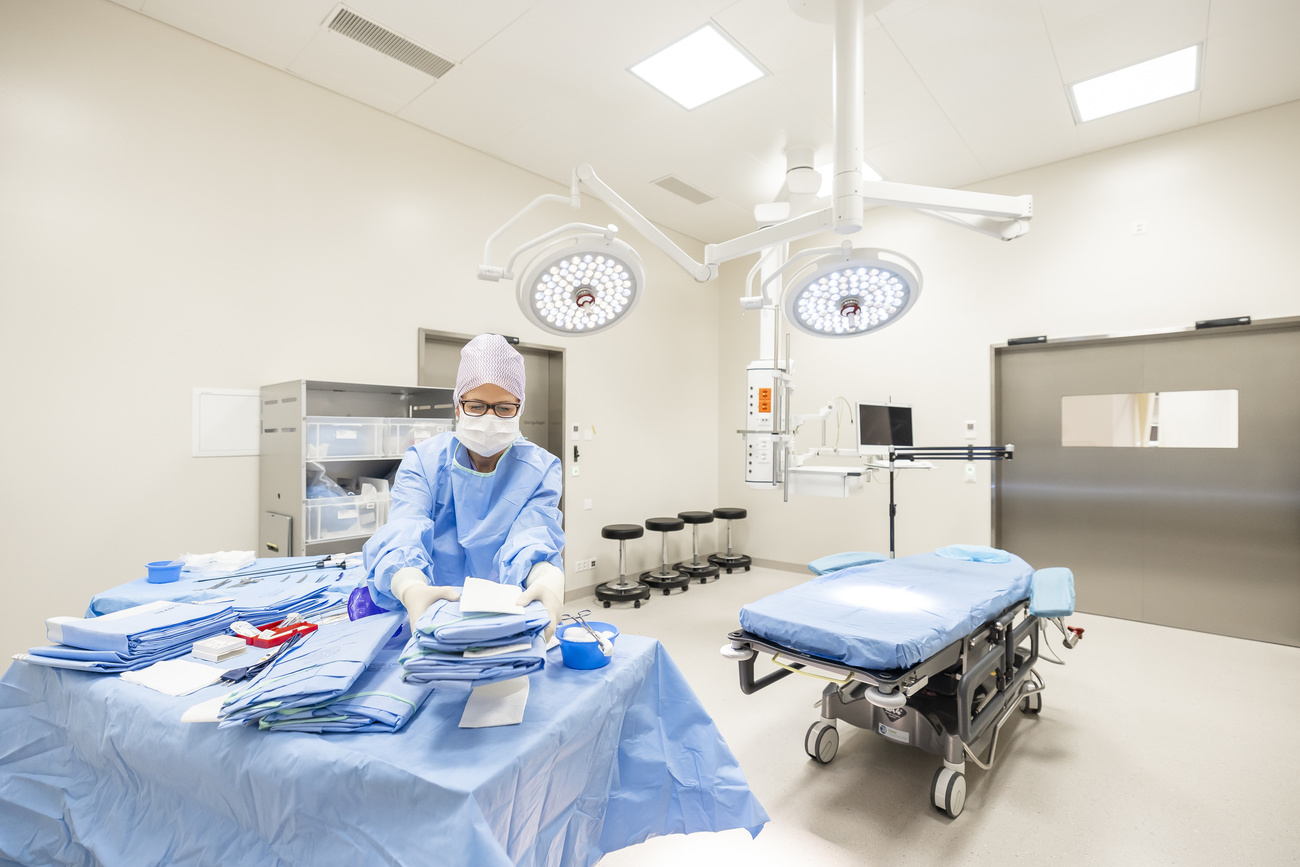Locarno pioneers cinema technology of the future

A special cinema for the screening of video films opened at this year's Locarno Film Festival. Sony, which sponsors the project, wants to use the venue to showcase its latest digital screening technologies in the future.
The PalaVideo Sony cinema used a small congress centre with 300 seats in Muralto, near Locarno’s Piazza Grande, to demonstrate how video images can be projected on to the big screen without losing the quality of the pictures.
At present films shot on video must be transferred to photographic film in the final stage of production – a costly and labour-intensive process.
The PalaVideo Sony cinema avoids this process by using precision mechanics in the projection room to minimise the loss of picture quality when using video film on the big screen.
“The idea to have a video-only cinema with high-tech facilities is very trendy”, says Patrick Boillat, who is festival director Marco Müller’s right-hand man for technical development. “Everybody in the film avant-garde talks of ‘webstreaming’ and ‘high-definition’ digital image nowadays. With the PalaVideo, we wanted to create a point of reference for filmmakers.”
Boillat is a former theatre producer and dancer from Lausanne. He became a technology buff through working with sound and is now a partner in a post-production firm and owns a studio for computer animation.
He says his biggest achievement so far was installing a sensor-round system in the 120-metre-long open-air cinema, where sound from the screen reaches the last row of seats half a second late.
Boillat says video has been the preferred medium for young and up-coming filmmakers for some time, but that more and more directors of feature films, some well-known, are now experimenting with video.
The use of hand-held video cameras was pioneered by the Danish ‘Dogma’ school, but heavy-weight filmmakers are now following in its footsteps. Hollywood director, Mike Figgis (“Leaving Las Vegas”) presented “Time Code” to an international audience for the first time in Locarno this year. The 90-minute-film, a black comedy thriller, was shot in real time with four cameras, and shown on a four-split screen.
Like most films shot on video, “Time Code” had to be transferred to photographic film in the final stage of production. The same is true for films, which are shot conventionally, but then digitalised, for instance to add special effects or manipulate colour.
This is where the PalaVideo Sony cinema in Muralto comes in. Its technology is still based on three-tube technology, also known as RGB projection, which combines a red, green and blue light beam. Basically, the technology is the same as that used to enlarge TV images for home screens. However, the screening which can be seen in Muralto is not only much bigger in size, but also much higher in quality.
The PalaVideo deals with the main problem of RGB projection – its lack of brightness – by using two powerful RGB projectors whose light beams overlap. Inaccuracies with overlapping which normally plague even simple RGB projections are minimised by using precision mechanics in the projection room.
The result is astonishing. Cinema-goers can still determine whether a film was shot in video, but it is impossible to tell the difference between a movie screened with a conventional projector from photographic film and the digital screening in the PalaVideo cinema.
“Development is rapid”, says Boillat. “Experiments are being made to overcome the problem of brightness by combining an ‘x’ number of projectors. In future, projector A could, for instance, beam segment A of a film to part A of a screen, and so on.”
Because technological progress is so fast, cinema operators are reluctant to invest in digital screening equipment. “For the festival, too, it wouldn’t make sense to buy expensive material which would probably be outdated the following year. That’s why we work with a corporate partner”, Boillat says.
He expects a new image carrier medium to replace magnetic videotape in the near future. “DVD [Digital Video Disc] isn’t good enough because it uses compressed data, but it remains an interesting option”.
Research, which is led by Sony and Kodak, is focusing on the possibilities of combining high-definition digital images with new carrier systems. “Maybe the solution will lie in a combination of different discs to be played simultaneously”, Boillat says.
Another, yet more futuristic cinema, could use “webstreaming”, where a cinema operator downloads a movie directly on to a hard-disc in his projection room. Webstreaming would cut distribution costs and enable distributors to charge cinema operators directly per number of screenings.
It would also offer interesting interactive possibilities to filmmakers, Boillat thinks. “They could communicate in real-time with cinema audiences, or re-work their films spontaneously. Films could be re-interpreted in the same way as musical compositions are.”
Boillat admits that much of this lies in the future. “Optical projectors are still infinitely less costly than the new technologies, whether these already exist or not. But digital screening equipment will become cheaper, and once the systems have been standardised like digital sound systems were, cinema operators will invest in them.”
Boillat is sure that, as a consequence, distributors will start to offer films in digital format.
by Markus Haefliger

In compliance with the JTI standards
More: SWI swissinfo.ch certified by the Journalism Trust Initiative








You can find an overview of ongoing debates with our journalists here . Please join us!
If you want to start a conversation about a topic raised in this article or want to report factual errors, email us at english@swissinfo.ch.